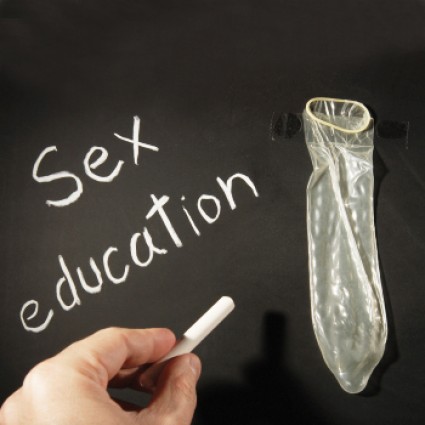It is no secret the number of unintended teen pregnancies are high, which is why many are wondering about teen condom use statistics. Parents and adults are questioning why teens aren’t practicing safe sex and teen condom use statistics may answer that question.
New teen condom use statistics report than most sexually active teens do not use condoms regularly. In fact, over half of all sexually active boys have said they don’t use them, according to the new teen condom use statistics. This disturbing behavior puts teens at risk for not only unintended pregnancy, but for sexually transmitted diseases. The lack of teen condom use is a likely suspect for why the number of unintended pregnancies and rise in the number of teens with STDs continues to rise. Continue reading to find out more about teen condom use statistics, and why teens aren’t using condoms.
According to the teen condom use statistics from Child Trends, a non-profit research center, about 53 percent of teen boys say they do not always use a condom during sex. About two-thirds of teen girls say a condom isn’t always used. About seventy percent of sexually active teen boys say they use a condom occasionally. The problem is with consistency, according to the teen condom use statistics.
Teen condom use statistics:
- Teen males who have received formal sex education is linked with having higher levels of condom use and are more consistent in the practice of doing so.
- The study also reported that the type of sex education, whether abstinence based or about contraception, did not seem to make a difference in these numbers of teens practicing smart condom use.
- About one in five teen males who had sex did not receive any kind of formal sexual education instruction beforehand. This seems to indicate that sex education needs to target teens before they actually begin in engaging in sex to help encourage the use of condoms.
- The teen condom use statistics provided by the study also found that older teens or teens in longer sexual relationships were less likely to use condoms. The study concluded this behavior was because there is a greater likelihood of the teen male’s sexual partner to be using a more effective method to prevent unwanted pregnancy like the birth control pill.
- The study found that age and relationship length played strong roles in the likelihood of teen condom use.
- Positive attitudes associated with teen condom use and condom use in general have been found to increase levels of condom use and consistency among teen males. Sexually active teen males who believe that condoms reduce physical pleasure or are embarrassed to discuss condom use with a partner are less likely to use condoms. This belief is why marketing and the messages portrayed with condom use should be positive and encouraging to help increase the teen condom use.
The primary reason behind the low teen condom use statistics is because of the poor misconceptions surrounding condoms. Studies and surveys of young teen males show they are worried the pleasure experienced during intercourse will diminish with the use of a condom. However, many condom manufacturers design condoms specifically to encourage and heighten the pleasure received during sex with the use of a condom. Another reason these teen condom use statistics are so low is because of embarrassment issues associated with condoms. Many teen males worry about the embarrassment of buying condoms with the worry of who might see them making the purchase. For teen males who don’t want their parents to know they are having sex, they worry about being caught having condoms stored in their bedroom or amongst their personal belongings. They are afraid of getting caught. Schools that encourage safe sex by freely handing out condoms or providing free condoms in the school nurse’s office or wellness center, may experience higher rates of teen condom use statistics. The study also revealed that many teen males believe it is the responsibility of the female partner to ensure a condom is used. They assume that if their female partner does not instigate the use of a condom, she must be on some method of birth control. However, this is not always the case and is not a safe assumption to make without knowing for certain. Behavior like this also leads to increased cases of STDs because birth control cannot protect against the transference of STDs.
Overall, teen condom use statistics imply the lack of condom use among sexually active teen males continues to play a role in the climb in unwanted teen pregnancies. The results of the study recommends schools and parents to become more active in providing proper sex education to students and young teens to help encourage teen condom use to help prevent STDs and cases of unplanned pregnancy.
Source: childtrends.org
